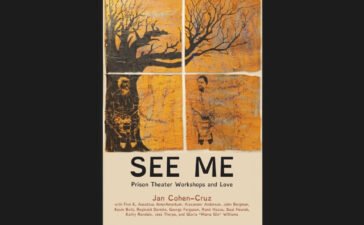Jesús leaves California after his wife and children are deported in the La Placita Raid, a 1931 raid in Los Angeles where authorities rounded up and repatriated four hundred Mexican migrants and Mexican Americans. The La Placita Raid was part of a systematic program of repatriation carried out by local governments across the United States. As many as two million Mexican migrants and Mexican Americans were forcibly deported, including many people born in the United States who had never been to Mexico before their repatriation. As the play details, Mexican laborers were originally recruited to perform jobs that white workers were unwilling to do. They were later forced out when those same white workers needed jobs during the Great Depression.
Black Sunday reminds the audience that when white farmers migrated to California, they weren’t arriving to orange groves miraculously empty and awaiting their arrival. The government systematically cleared that land of its previous inhabitants. Díaz conveys this through a Ken Burns-inspired prologue, which lays bare the racist and xenophobic rhetoric of the time (presaging the language of right-wing nationalism today). She also accomplishes this through Jesús’s interactions with the family. Each member regards him differently: Sunny as a hypersexualized fantasy through which she can enact her desire to get to a fantasy land of milk and honey, Pa as more dehumanized than the animals he murders, and Ma as the key to decoding her visions. Jesús has his own agenda: to buy the land that the bank has foreclosed on so that his wife and children can join him to start anew.
But the land is devastated. During the Dust Bowl, dozens of so-called black blizzards roiled the Great Plains. The dust storm that came to be known as Black Sunday hit on 14 April 1935, stretching more than a thousand miles long and removing up to three million tons of topsoil. The play pays fastidious attention to the environment, even taxonomizing the dust: “When it’s in the ground it’s soil. When it’s in your house, it’s dirt. When it’s in the air, it’s dust …When it’s wet, it’s mud. When it’s in your teeth, its grit.”
Díaz describes the play as an ecological horror, but it’s not a traditional horror story. At first, the monster seems to be the environment itself. Ma warns her daughter that something is out to get them:
Time. And the land. The relation between the two. This land, seems to me’s, at the point it’s bringing more death than life. Drought. Dirt…you’ll see you have the same problem no matter where you go. You’ll off to California and see orange groves the first year and by the time you’re an old lady you’ll look outside they’ll be fire. The land woulda found you again. Mark my words: FIRE.
Chyrons projected on the set count down the days from 9 April 1935, until 14 April, cultivating a sense of foreboding.
The play, however, subverts a simplistic dramaturgy in which the environment is the antagonist, a narrative played out onstage and onscreen in many disaster stories from The Grapes of Wrath to The Day After Tomorrow. Pa pits himself against the land again and again, indiscriminately mutilating animals and further ravaging the ecosystem. He decimates the coyotes in revenge for their eating the chickens without realizing that the coyotes kept the rabbit population in check. Then he gathers the region’s remaining men to eradicate the rabbits. Absent the rabbits, the locusts descend, a factual historical detail that evokes Black Sunday’s Biblical themes. Ma sees herself as an Old Testament prophet: Daniel in the lions’ den. The preacher, throughout the play, works on a sermon about that same parable and the true nature of faith. Jesús finally translates Ma’s visions—in her drawings he sees his family on their way to join him in Texas—but reminds her that Daniel was the interpreter of dreams. Instead, Ma is the king from the story, slowly going mad.





